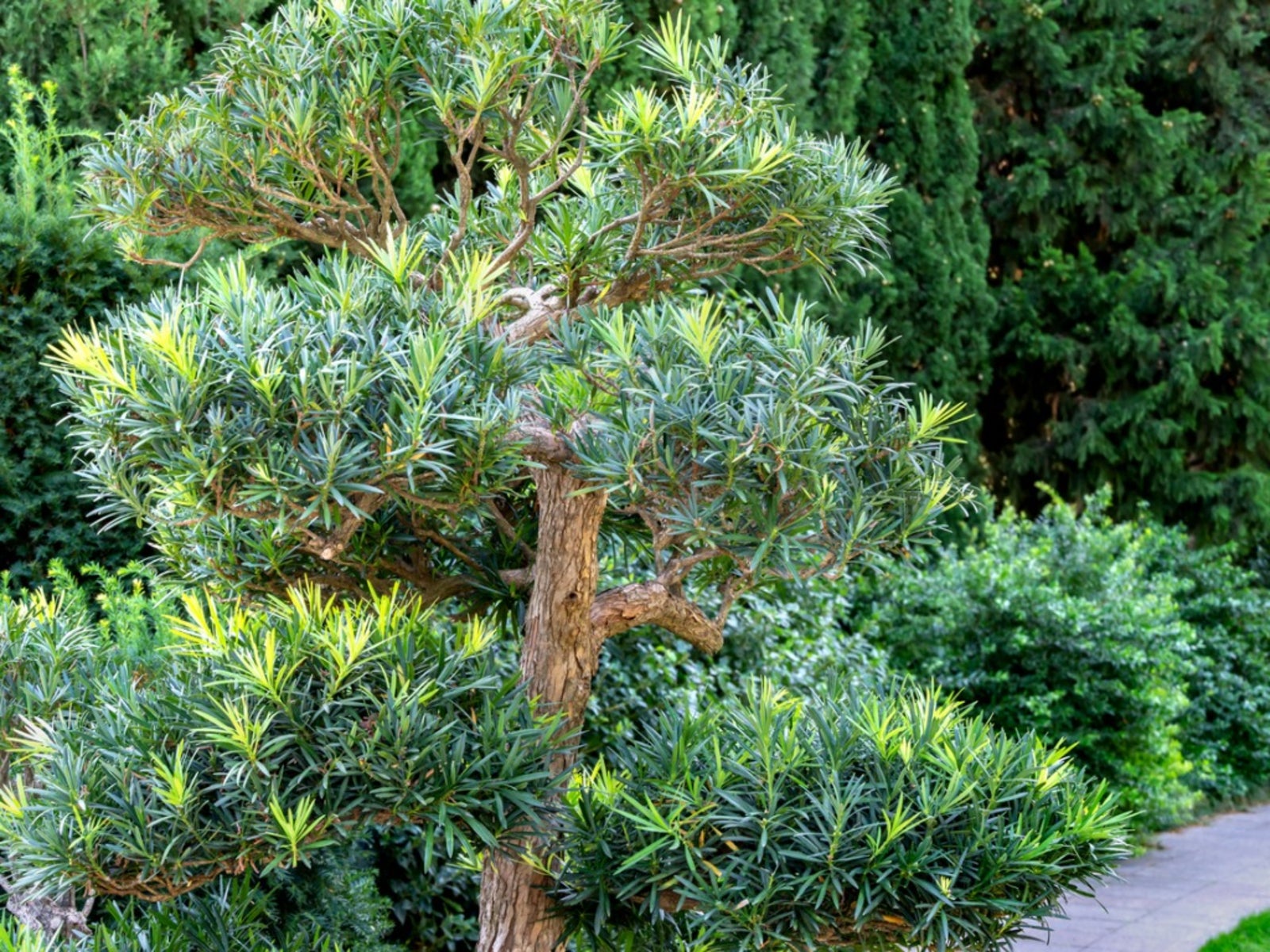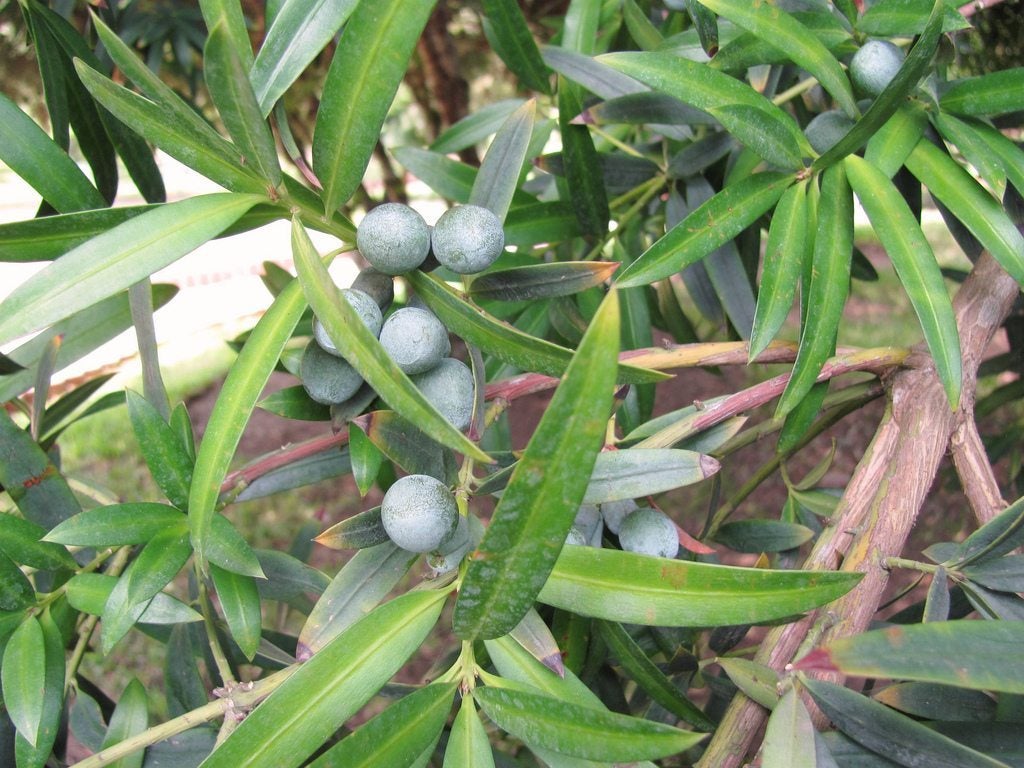Podocarpus Plant Care: Learn About Podocarpus Yew Pine Trees


Podocarpus plants are often referred to as Japanese yews, however, they are not a true member of the Taxus genus. It is their needle-like leaves and growth form that is similar to the yew family, as well as their berries. The plants also have severe toxicity similar to yew plants. In the garden, growing a Podocarpus tree provides ornamental beauty combined with ease of care. Podocarpus plant care is considered minimal. This is a tough, adaptable plant, capable of surviving in a variety of sites.
About Podocarpus Plants
Podocarpus is an especially easy-to-grow plant in temperate to mildly warm regions. It is quite unfussy about its lighting situation, although brighter light brings faster growth. Originally from Asia, the plant is a darling of landscapers, both for its adaptability but also the way in which it can be grown. Pruning the plant to any desired shape does not offend it and even espaliering is an option. It is also tolerant of air pollution, poor drainage, compact soil, and even drought once established. The Podocarpus yew pine, shrubby yew, or better yet, Podocarpus macrophyllus, is a large shrub to small tree. Plants can achieve 8 to 10 feet (2-3 m.) in height with an upright, slightly pyramidal form and finely textured, slender evergreen leaves that are very resistant to deer damage. The fruits are very decorative, with blue female cones that develop into fleshy purple to pink elongated berries. These can cause vomiting and diarrhea if ingested, especially in children, and should be avoided.
Growing a Podocarpus Tree
Podocarpus yew pine is hardy in United States Department of Agriculture zones 8 to 10. Young plants should be babied a bit but, once established, Podocarpus tree care is minimal. The plant is not considered invasive and it has no pest or disease issues of concern. It can be tightly sheared to a beautiful hedge, left alone to develop a pretty conical appearance, or drastically trained as in the case of espalier. Almost any site will do for this plant, although good drainage, average water, at least six hours of sun per day, and moderately fertile soil will promote the best growth. The plant does tolerate almost any soil pH and has moderate salt acceptance as well. Young Podocarpus plant care should include regular watering as the tree establishes, early training if necessary, and removal of competitive weeds. A light layer of organic mulch can help protect the surface roots and prevent weeds.
Podocarpus Tree Care
This is one of the easier plants to grow in the landscape and should be used frequently. The plant may develop some magnesium deficiency in sandy soils which can be combated with magnesium sulfate. It can also get moderate infestations of mites or scale. Use horticultural oils if infestations are severe, otherwise, keep the plant well watered and healthy so it can withstand small invasions of those tiny pests. Mold or mildew may occur in instances where the plant is watered from above. Use drip systems or soaker hoses to reduce this issue. Ignoring this plant for long periods of time will not harm established Podocarpus. Due to the plant's adaptability, range of site conditions, and hardiness, Podocarpus plant care is a gardener's dream, making it one of the outstanding landscape plants available.
Gardening tips, videos, info and more delivered right to your inbox!
Sign up for the Gardening Know How newsletter today and receive a free copy of our e-book "How to Grow Delicious Tomatoes".

Bonnie Grant is a professional landscaper with a Certification in Urban Gardening. She has been gardening and writing for 15 years. A former professional chef, she has a passion for edible landscaping.
-
 Looking For Plants To Give You The Soft And Fuzzies? Try These 5 Fuzzy Leaf Plant Options
Looking For Plants To Give You The Soft And Fuzzies? Try These 5 Fuzzy Leaf Plant OptionsLovers of texture, drama, silver foliage and tactile plants will adore these special sensory garden additions. These fuzzy leaf plant options will leave you all aglow
By Susan Albert
-
 Get Ready For A Summer Of Hummers! Grow These Full Sun Hummingbird Plants and Flowers
Get Ready For A Summer Of Hummers! Grow These Full Sun Hummingbird Plants and FlowersIf you’re lucky enough to enjoy a sunny backyard, make sure you are maxing out on your pollinator opportunities and grow these full sun hummingbird plants and flowers
By Tonya Barnett
